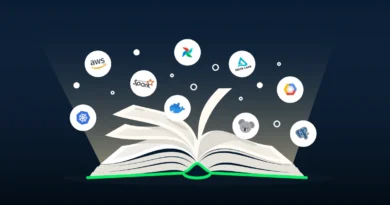Free Associate Analytics Course (4Months)
Associate Analytics:

Associate – Analytics in the IT-ITeS Industry is also known as a Business Analytics Associate
Brief Job Description: Individuals at this job are responsible for tracking business metrics and generating dashboards for the consumption of business managers. Individuals need to develop research protocols, analytical frameworks and crack tough business problems across verticals. Individuals also need to explore data to find new patterns and relationships by applying quantitative techniques, and build statistical models.
Personal Attributes: This job requires the individual to work independently and handle large amounts of data. He/she is also required to display strong quantitative abilities to sort through different types of data and transform meaningless data into useful information.

Carry out rule-based statistical analysis:
Performance Criteria
To be competent, you must be able to:
PC1. establish clearly the objectives and scope of the analysis
PC2. obtain guidance from appropriate people to identify suitable data sources to agree the methodological approach
PC3. obtain and structure data using standard templates and tools
PC4. validate data accurately and identify anomalies
PC5. obtain guidance from appropriate people on how to handle anomalies in data
PC6. carry out rule-based analysis of the data in line with the analysis plan
PC7. validate the results of your analysis according to statistical guidelines
PC8. review the results of your analysis with appropriate people
PC9. undertake modifications to your analysis based on inputs from appropriate people
PC10. draw justifiable inferences from your analysis
PC11. present the results and inferences from your analysis using standard templates and tools
PC12. comply with your organization’s policies, procedures and guidelines when carrying out rule-based quantitative analysis

Organizational Context
You need to know and understand: KA1. the purpose and aims of the statistical analysis being undertaken KA2. your organization’s policies, procedures and guidelines which relate to rule-based statistical analysis KA3. different data sources and how to access documents and information from data sources KA4. your organization’s policies and procedures for sharing data KA5. who to involve when undertaking statistical data analysis KA6. the range of standard templates and tools available and how to use them
Technical Knowledge
You need to know and understand: KB1. different methodological approaches to statistical analysis KB2. how to structure and classify statistical data KB3. the range of anomalies that may be present in statistical analysis and how to identify and correct these KB4. techniques for interrogating and validating statistical data KB5. different statistical analysis databases, software and tools and how to use these, including SQL and scripting tools KB6. how to apply rule-based statistical analysis approaches KB7. how to create documents for gathering feedback and reviewing data KB8. how to obtain, analyze and use feedback to improve the data KB9. how to make inferences from statistical analysis KB10. types of predictions/conclusions that can be made based on statistical data KB11. different graphical formats for presenting data and how to create these KB12. different ways of presenting information KB13. the importance of providing rationale for inferences
Generic Skills
Writing Skills
You need to know and understand how to:
SA1. complete accurate well written work with attention to detail
Reading Skills
You need to know and understand how to:
SA2. follow instructions, guidelines, procedures, rules and service level agreements
Oral Communication (Listening and Speaking skills)
You need to know and understand how to:
SA3. ask for clarification and advice from appropriate people
SA4. listen effectively and orally communicate information accurately
Professional Skills
Decision Making
You need to know and understand how to:
SB1. follow rule-based decision-making processes
SB2. make a decision on a suitable course of action
SB3. check if decisions need to be referred to, or ratified by, line managers
Plan and Organize
You need to know and understand how to:
SB4. plan and organize your own work to achieve targets and deadlines
SB5. provide accurate reports to line managers in a timely manner as required
Customer Centricity
You need to know Associate Analytics and understand how to:
SB6. check that your own work meets customer requirements
SB7. deliver consistent and reliable service to customers
SB8. work effectively in a customer facing environment
SB9. build and maintain positive and effective relationships with customers
Problem Solving
You need to know and understand how to:
SB10. refer anomalies to the supervisor
SB11. apply problem-solving approaches in different situations
Analytical Thinking
You need to know and understand how to:
SB12. analyze data and activities
SB13. configure data and disseminate relevant information to others
Critical Thinking
You need to know and understand how to:
SB14. provide opinions on work in a detailed and constructive way
SB15. apply balanced judgments to different situations
Attention to Detail
You need to know and understand how to:
SB16. check your work is complete and free from errors
SB17. follow quality Associate Analytics assurance standards
Team Working

You need to know and understand how to:
SB18. work independently and collaboratively
SB19. work effectively in a team environment
SB20. contribute to team building activities
Technical Skills
You need to know and understand how to:
SC1. store and retrieve Associate Analytics information
SC2. identify and refer anomalies in data
SC3. agree objectives and work requirements
SC4. use information technology effectively to input and/or extract data accurately
SC5. use the following Microsoft packages: Word, Excel and PowerPoint
SC6. use tools and software packages specific to your role
SC7. use information technology to browse the internet
SC8. keep up to date with changes, Associate Analytics procedures and practices in your field of expertise
Create documents for knowledge sharing:
Performance Criteria
To be competent, you must be able to:
PC1. establish with appropriate people the purpose, scope, formats and target audience for the documents
PC2. access existing documents, Associate Analytics language standards, templates and documentation tools from your organization’s knowledge base
PC3. liaise with appropriate people to obtain and verify the information required for the documents
PC4. confirm the content and structure of the documents with appropriate people
PC5. create documents using standard templates and agreed language standards
PC6. review documents with appropriate people and incorporate their inputs
PC7. submit documents for approval by appropriate people
PC8. publish documents in agreed formats
PC9. update your organization’s knowledge base with the documents
PC10. comply with your organization’s policies, Associate Analytics procedures and guidelines when creating documents for knowledge sharing
Associate Analytics Organizational Context
You need to know and understand: KA1. standard operating procedures of your organization’s policies, procedures and guidelines for creating documents for knowledge sharing KA2. the purpose and scope of the work to be carried out and the importance of keeping within these boundaries KA3. who to involve when developing documents and their roles and responsibilities KA4. intended audiences for documentsKA5. your organization’s knowledge base and how to access and update this KA6. the importance of verifying information obtained for documents and how to do this KA7. the importance of reviewing documents with others KA8. how to use feedback to improve documents KA9. your organization’s processes and procedures for approving and publishing documents KA10. methods and techniques used when working with others KA11. tools, templates and language standards available and how to use these KA12. how to convert the work element into meaningful documents by proper abstraction and categories suited to standard templates
Associate Analytics Technical Knowledge
You need to know and understand: KB1. the purpose and scope of the work to be carried out and the importance of keeping within these boundaries KB2. sources of information and reference materials for creating documents KB3. different styles used in documents, including: your organization’s house style types and styles of documents templates KB4. different ways of structuring documents and how to select the best structure for the agreed content KB5. how to check and make corrections to documents for common editorial problems and errors, including: deviations factual accuracies linguistic mistakes discrepancies errors ambiguities in content formatting KB6. the importance of obtaining approval for documents and who to obtain this from KB7. change management procedures, including version control and approvals KB8. how to use document preparation tools including Word, Visio, PowerPoint, Excel
Generic Skills
Associate Analytics Writing Skills
You need to know and understand how to:
SA1. complete accurate well written work with attention to detail communicate with others in writing
Associate Analytics Reading Skills
You need to know and understand how to:
SA3. follow guidelines, procedures, rules and service level agreements
Oral Communication (Listening and Speaking skills)
You need to know and understand how to:
SA4. listen effectively and orally communicate information accurately
SA5. ask for clarification and advice from others
Professional Skills
Decision Making
You need to know and understand how to:
SB1. identify anomalies in data
SB2. make a decision on a suitable course of action
SB3. time management
SB4. multi-tasking
Associate Analytics Plan and Organize
You need to know and understand how to:
SB5. plan and organize your work to achieve targets and deadlines
SB6. manage your time effectively
SB7. handle multiple tasks concurrently
Associate Analytics Customer Centricity
You need to know and understand how to:
SB8. check that your own and/or your peers’ work meets customer requirements
SB9. work effectively in a customer facing environment
SB10. build and maintain positive and effective relationships with customers
Problem Solving
Associate Analytics

You need to know and understand how to:
SB11. seek clarification on problems from others
SB12. apply problem-solving approaches in different situations
SB13. refer anomalies to the line manager
Analytical Thinking
You need to know and understand how to:
SB14. analyze data and activities
SB15. configure data and disseminate relevant information to others
SB16. pass on relevant information to others
Critical Thinking
You need to know and understand how to:
SB17. provide opinions on work in a detailed and constructive way
SB18. apply balanced judgments to different situations
Attention to Detail
You need to know and understand how to:
SB19. check your work is complete and free from errors
SB20. get your work checked by others
Team Working
You need to know and understand how to:
SB21. work independently and collaboratively
SB22. work effectively in a team environment
SB23. contribute to the quality of team working

Technical Skills
You need to know and understand how to:
SC1. use information technology effectively to input and/or extract data accurately
SC2. identify and refer anomalies in data
SC3. store and retrieve information
SC4. keep data secure
SC5. agree objectives and work requirements
SC6. use coding standards
SC7. keep up to date with changes, procedures and practices in your role
Manage your work to meet requirements:
Performance Criteria
To be competent on the job, you must be able to:
PC1. establish and agree your work requirements with appropriate people
PC2. keep your immediate work area clean and tidy
PC3. utilize your time effectively
PC4. use resources correctly and efficiently
PC5. treat confidential information correctly
PC6. work in line with your organization’s policies and procedures
PC7. work within the limits of your job role
PC8. obtain guidance from appropriate people, where necessary
PC9. ensure your work meets the agreed requirements
Organizational Context
You need to know and understand: KA1. your organization’s policies, procedures and priorities for your area of work and your role and responsibilities in carrying out your work KA2. limits of your responsibilities and when to involve others KA3. your specific work requirements and who these must be agreed with KA4. the importance of having a tidy work area and how to do this KA5. how to prioritize your workload according to urgency and importance and the benefits of this KA6. your organization’s policies and procedures for dealing with confidential
Applicable NOS Unit information and the importance of complying with these KA7. the purpose of keeping others updated with the progress of your work KA8. who to obtain guidance from and the typical circumstances when this may be required KA9. the purpose and value of being flexible and adapting work plans to reflect change B. Technical Knowledge You need to know and understand: KB1. the importance of completing work accurately and how to do this KB2. appropriate timescales for completing your work and the implications of not meeting these for you and the organization KB3. resources needed for your work and how to obtain and use these
Generic Skills
Writing Skills
You need to know and understand how to:
SA1. complete accurate work with attention to detail
Reading Skills
You need to know and understand how to:
SA2. read instructions, guidelines, procedures, rules and service level agreements
Oral Communication (Listening and Speaking skills)
You need to know and understand how to:
SA3. ask for clarification and advice from line managers
SA4. communicate orally with colleagues
Professional Skills
Decision Making
You need to know and understand how to:
SB1. make a decision on a suitable course of action
Plan and Organize
You need to know and understand how to:
SB2. plan and organize your work to achieve targets and deadlines
SB3. agree objectives and work requirements
Customer Centricity
You need to know and understand how to:
SB4. deliver consistent and reliable service to customers
SB5. check that your own work meets customer requirements
Problem Solving
You need to know and understand how to:
SB6. refer anomalies to the line manager
SB7. seek clarification on problems from others
Analytical Thinking
You need to know and understand how to:
SB8. provide relevant information to others
SB9. analyze needs, requirements and dependencies in order to meet your work requirements
Critical Thinking
You need to know and understand how to:
SB10. apply judgments to different situations
Attention to Detail
You need to know and understand how to:
SB11. check your work is complete and free from errors
SB12. get your work checked by peers
Team Working
You need to know and understand how to:
SB13. work effectively in a team environment
Technical Skills
You need to know and understand how to:
SC1. use information technology effectively, to input and/or extract data accurately
SC2. identify and refer anomalies in data
SC3. store and retrieve information
SC4. keep up to date with changes, procedures and practices in your role

Work effectively with colleagues:
Performance Criteria
To be competent, you must be able to:
PC1. communicate with colleagues clearly, concisely and accurately
PC2. work with colleagues to integrate your work effectively with them
PC3. pass on essential information to colleagues in line with organizational requirements
PC4. work in ways that show respect for colleagues
PC5. carry out commitments you have made to colleagues
PC6. let colleagues know in good time if you cannot carry out your commitments, explaining the reasons
PC7. identify any problems you have working with colleagues and take the initiative to solve these problems
PC8. follow the organization’s policies and procedures for working with colleagues
Organizational Context
You need to know and understand: KA1. your organization’s policies and procedures for working with colleagues and your role and responsibilities in relation to this KA2. the importance of effective communication and establishing good working relationships with colleagues KA3. different methods of communication and the circumstances in which it is appropriate to use these KA4. benefits of developing productive working relationships with colleagues KA5. the importance of creating an environment of trust and mutual respect in an environment where you have no authority over those you are working with KA6. where you do not meet your commitments, the implications this will have on individuals and the organization
Technical Knowledge
You need to know and understand: KB1. different types of information that colleagues might need and the importance of providing this information when it is required KB2. the importance of understanding problems from your colleague’s perspective and how to provide support, where necessary, to resolve these
Generic Skills
Writing Skills
You need to know and understand how to:
SA1. complete accurate, well written work with attention to detail
SA2. communicate effectively with colleagues in writing
Reading Skills
You need to know and understand how to:
SA3. read instructions, guidelines, procedures, rules and service level agreements
Oral Communication (Listening and Speaking skills)
You need to know and understand how to:
SA4. listen effectively and orally communicate information accurately
SA5. ask for clarification and advice from line managers
Professional Skills
Decision Making
You need to know and understand how to:
SB1. make a decision on a suitable course of action
Plan and Organize
You need to know and understand how to:
SB2. plan and organize your work to achieve targets and deadlines
Customer Centricity
You need to know and understand how to:
SB3. check that your own work meets customer requirements
SB4. deliver consistent and reliable service to customers
Problem Solving
You need to know and understand how to:
SB5. apply problem solving approaches in different situations
Critical Thinking
You need to know and understand how to:
SB6. apply balanced judgments to different situations
Attention to Detail
You need to know and understand how to:
SB7. check your work is complete and free from errors
SB8. get your work checked by peers
Team Working
You need to know and understand how to:
SB9. work effectively in a team environment
SB10. work effectively with colleagues and other teams
Technical Skills
You need to know and understand how to:
SC1. identify and refer anomalies
SC2. help reach agreements with colleagues
SC3. keep up to date with changes, procedures and practices in your role
Guidelines for Assessment:
- Criteria for assessment for each Qualification Pack (QP) will be created by the Sector Skill Council (SSC). Each performance criteria (PC) will be assigned Theory and Skill/Practical marks proportional to its importance in NOS.
- The assessment will be conducted online through assessment providers authorised by SSC.
- Format of questions will include a variety of styles suitable to the PC being tested such as multiple choice questions, fill in the blanks, situational judgment test, simulation and programming test.
- To pass a QP, a trainee should pass each individual NOS. Standard passing criteria for each NOS is 70%.







